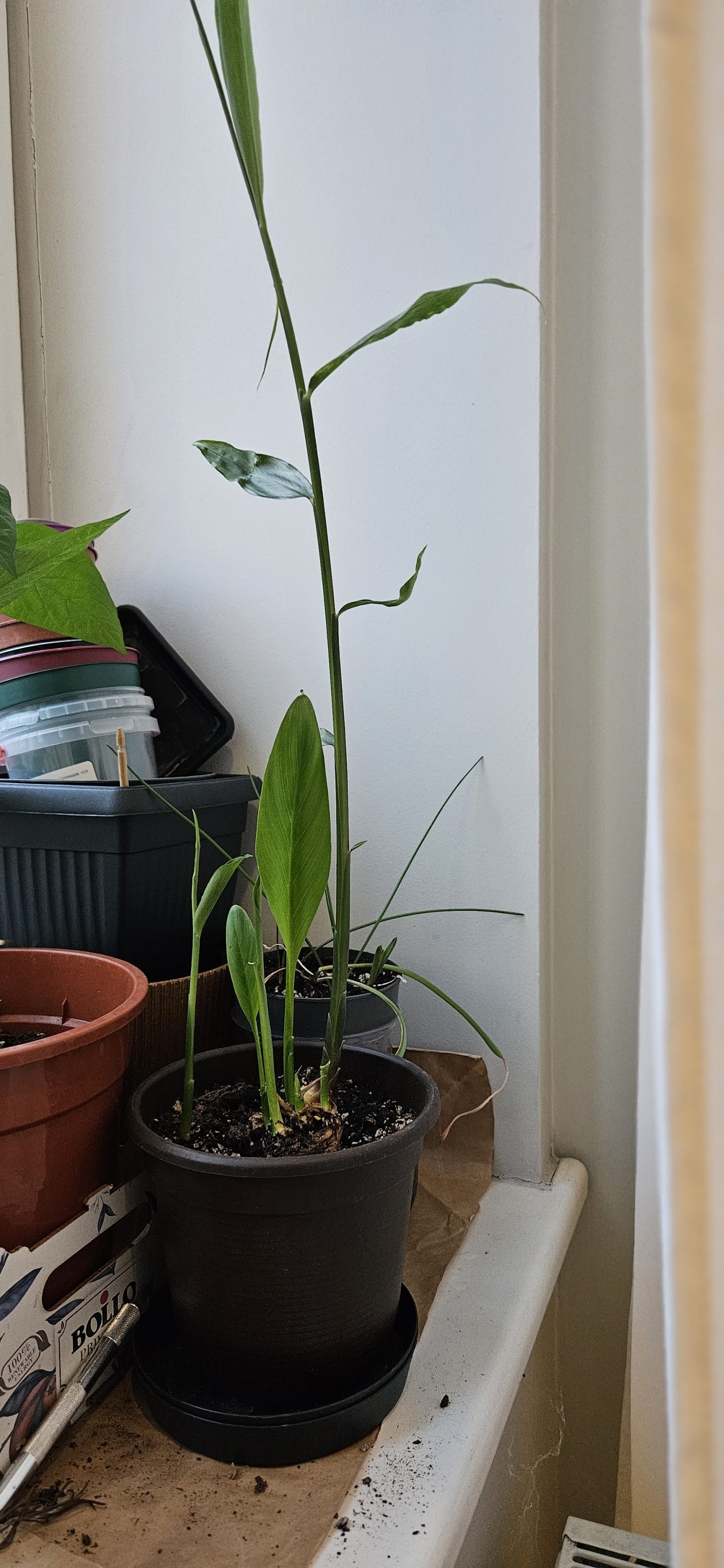General description
Zingiber officinale, commonly known as Ginger, is a flowering plant widely recognized for its aromatic and flavorful rhizomes, which are used as a spice and medicinal ingredient. Native to Southeast Asia, Ginger belongs to the Zingiberaceae family. The plant features tall, slender stems with narrow, lance-shaped leaves and produces clusters of white and pink flower buds that bloom into yellow flowers. Ginger plants can grow to a height of 60-90 centimeters (24-35 inches) and are valued not only for their culinary uses but also for their health benefits, including anti-inflammatory and digestive properties. They are suitable for both outdoor gardens and indoor containers.
Basic care
| Sunlight requirements | Watering schedule | Coffee grounds |
| Partial sunlight | 7 days | Beneficial in moderate amounts |
Tips
Repotting: If growing Ginger in containers, repot every year or when the plant becomes root-bound. Choose a pot that is slightly larger with adequate drainage holes. Refresh the soil with a mix of fresh potting soil and compost to encourage continued growth and rhizome development.
Light: Ginger plants thrive best in partial to full sunlight. They prefer filtered light or dappled shade, especially in hotter climates. While they can tolerate full sun, too much direct sunlight may scorch the leaves, so it’s advisable to provide some shade during the hottest part of the day.
Watering: Keep the soil consistently moist but not waterlogged. Water your Ginger plant weekly, ensuring that the top inch of soil dries out slightly between waterings. Increase the frequency during hotter months or if the plant is grown in a container, as potting soil dries out more quickly.
Soil Type: Plant Ginger in a rich, well-draining soil. A mix of garden soil and organic compost is ideal, providing the nutrients necessary for healthy growth. Good drainage is essential to prevent root rot, so ensure the soil is loose and not compacted.
Coffee Grounds: Coffee grounds can be beneficial for Ginger plants when used in moderation. They add organic matter to the soil and can help improve soil structure and drainage. Mix used coffee grounds into the compost or sprinkle lightly around the base of the plant.
Temperature and Humidity: Ginger prefers warm, humid conditions. Ideal temperatures range from 20°C to 30°C (68°F to 86°F). In colder climates, consider growing Ginger indoors or in a greenhouse to maintain the necessary warmth and humidity levels.
Fertilization: Feed Ginger plants with a balanced, organic fertilizer every 6-8 weeks during the growing season (spring and summer). A high-phosphorus fertilizer can promote healthy root development, which is crucial for Ginger rhizome production.
Pruning: Minimal pruning is needed for Ginger plants. Remove any dead or yellowing leaves to maintain the plant’s appearance and health. Trim back stems that have flowered to encourage new growth.
Watering Frequency: Every 7 day(s)
Last Watered On: 2024-09-07 17:46:08
